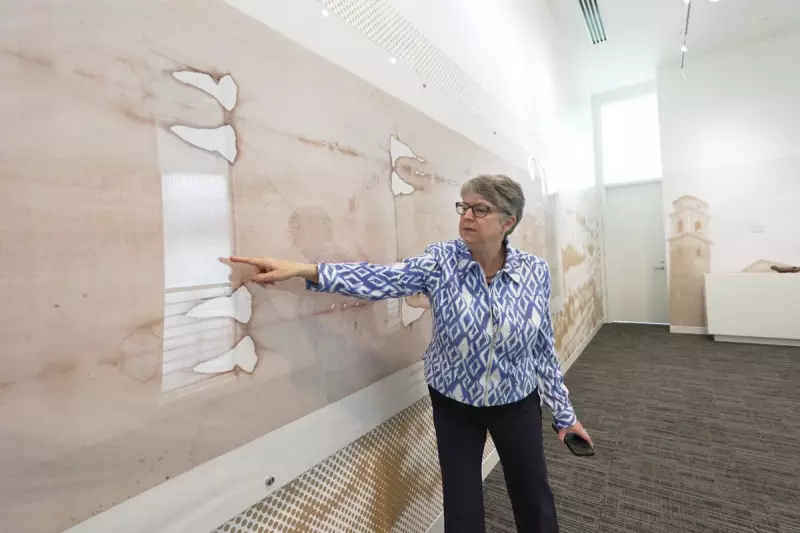
A groundbreaking new museum offering an immersive journey into the mystery of the Shroud of Turin has officially opened to the public on the Christ Cathedral campus in Garden Grove, California.
The $5 million exhibition, titled "The Shroud of Turin: An Immersive Experience," represents three years of development and was funded entirely by private donations. It features state-of-the-art 360-degree projection theatres, detailed replicas of the Shroud itself, interactive kiosks, and a life-size sculpture of Christ.
Where Science Investigates Faith
The content for the ambitious project was primarily developed by Othonia, Inc., a Rome-based organisation dedicated to the scientific examination of the shroud. The original artefact, a 14-foot-long linen cloth bearing the faint image of a crucified man, is kept in a climate-controlled, bulletproof case in the Cathedral of Saint John the Baptist in Turin, Italy.
The new California museum spans 10,000 square feet and includes a massive, life-size laminated visual of the shroud stretched across a wall. For many Christians, it is a powerful symbol of Christ's suffering, though the Vatican itself makes no claim regarding its authenticity.
The debate is fuelled by science. Carbon dating of cloth samples in the 1980s placed its origin in the 13th or 14th century. However, many believers and some scientists argue the results were skewed by contamination and point to other evidence, such as pollen from Jerusalem and a weaving pattern unique to the first century.
An Immersive Encounter with History
One of the exhibition's most dramatic highlights is a recreation of Christ's resurrection. Visitors sit inside a representation of the tomb and witness the shrouded body disappear in a flash of light. The exhibit also displays replicas of the spear said to have pierced Christ's side and the crown of thorns.
Philip Rizzo, a parishioner from Huntington Beach who previewed the exhibit, said these visual representations powerfully convey the story of sacrifice. "We're tangible beings, not just spirit and light," he remarked. "Science really helps make that connection."
The driving force behind the museum is Dr. August Accetta, a gynaecologist whose fascination with the shroud converted him from agnostic to Catholic. His work follows the 1978 Shroud of Turin Research Project, led by nuclear physicist John Jackson, which concluded the cloth contained real human bloodstains and that the image's formation could not be explained by any known process.
Dr. Accetta and others, like Rev. Robert Spitzer of the Magis Center, theorise that a brief, massive burst of radiation—akin to the body turning to light—created the precise image without burning the linen. "The only explanation is that body has to disappear," Spitzer said.
A Lasting Exhibition for Seekers
While the original shroud remains in Turin and was last publicly displayed in 2015, this new immersive exhibit in Orange County is scheduled to remain open until at least 2030.
Auxiliary Bishop Timothy Freyer expressed his hope that the exhibit will strengthen the faith of believers and spark curiosity in others. "My hope is that people of faith will have stronger faith, people who are doubting will come to belief and people with no faith will begin the questioning process," he said.
Nora Creech, director of Othonia in the U.S., explained that the immersive experience, created by a California studio, takes visitors from Christ's birth and crucifixion to the resurrection, ending with the message that "Jesus is still with us today."
For scientist Rudy Dichtl, part of the 1978 research team, the shroud's mystery endures. As a scientist, he acknowledges limited evidence to conclusively prove it is Christ's burial cloth. "But as a Christian," he stated, "I do believe it is."





